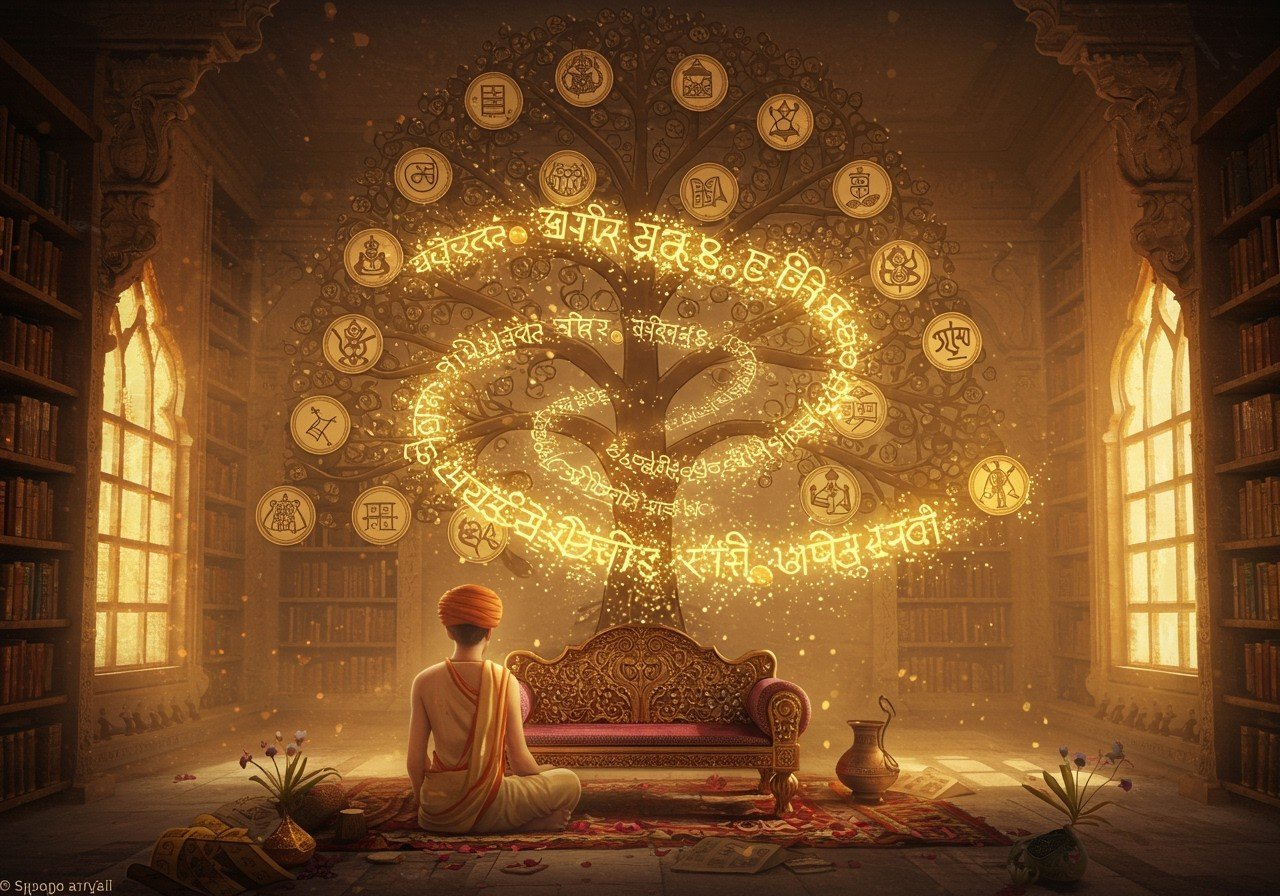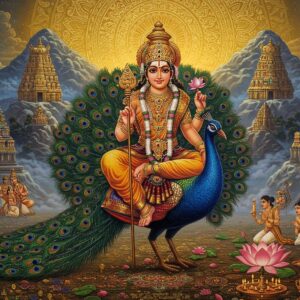
Tatpurusha Samasa, a fascinating element of Sanskrit grammar, forms compound words by linking two or more words, where one clarifies the other. Think of it like a word puzzle where pieces combine to reveal a deeper meaning. Different from other Samasas like Dvandva, Bahuvrihi, and Karmadhāraya, Tatpurusha Samasa boasts a unique grammatical structure. This structure dictates the relationship between the words, shaping the compound’s overall meaning. Understanding this Samasa is like unlocking a secret code to Sanskrit’s intricate grammar.
Unveiling the Varieties of Tatpurusha Samasa
Just like a colourful tapestry woven with various threads, Tatpurusha Samasa comes in several forms, each distinguished by the grammatical function of the subordinate word:
- Vibhaktitatpurusha: This is the most common type, where the first word takes on a case ending based on its relationship to the second word. It is further classified based on which case (Vibhakti) is used.
- Dvigu: This one is a bit unique. In Dvigu Samasa, the first word represents a number, and the second word is a noun. The compound represents a collection or group of that noun. For example, “triloka” (three worlds).
- Karmadhāraya: In this type, the first word acts like an adjective, describing the second word. It creates vivid imagery by describing the characteristics of the noun. “Neelkamal” (blue lotus) illustrates this beautifully.
- Nañtatapuruṣa: Here, the first word involves negation (nañ), creating a compound word that indicates absence. “Avidya” (lack of knowledge) is a potent example.
- Upapada tatpuruṣa: This interesting type uses words derived from verbs, creating a compound word that is dynamic and action-oriented. “Kritajña” (grateful) illustrates this.
- Prāditatpuruṣa: This form is relatively rarer and involves specific prepositions, creating a meaning based on the relationship they express. It shows how location and context can be embedded in a single word.
For those seeking authentic puja items, Sarbosadhi, Mahosadhi, green mung dal, and jaifal (nutmeg) are essential ingredients often used in traditional ceremonies. You can find these and more at Poojn.in.
Delving into Specific Examples
Let’s take a closer look at a few examples of Tatpurusha Samasa to understand its application:
- Raja-purusha: Meaning “king’s man,” this example illustrates how two nouns combine to denote a relationship or role.
- Guru-shishya: Meaning “teacher-student,” it depicts a bond defined by learning and guidance.
- Maharaja: Meaning “great king,” showcases an adjective modifying a noun, creating a single, powerful title.
- Dasarathaputra: Meaning “son of Dasaratha,” exemplifies possession and lineage.
These examples reveal how Tatpurusha Samasa concisely conveys complex relationships and descriptions, enriching the language’s expressive power.
Poojn.in: Your Companion in Traditional Practices
Whether you are a seasoned practitioner or just beginning your exploration of Indian traditions, Poojn.in is your one-stop shop for all your puja needs. We offer a wide selection of authentic items:
- Complete Puja Samagri Kits: Find everything you need for your puja, conveniently packaged together. This ensures you have all the necessary components for a successful and spiritually fulfilling ceremony.
- Pure Copper and Brass Vessels: Enhance the sanctity of your rituals with our range of high-quality vessels, crafted from pure materials. These not only add to the aesthetic appeal but also uphold traditional practices.
- Traditional Dhoop and Agarbatti: Create a sacred atmosphere with our selection of fragrant dhoop and agarbatti from trusted brands. Choose from a variety of scents to uplift your spiritual experience.
You can explore our extensive collection at www.poojn.in or contact us at 03369029784. For personalized assistance, connect with us on WhatsApp at 9476142738. We deliver across India, ensuring your chosen items reach you with utmost care and respect for their sanctity.
Embrace the Legacy of Tatpurusha Samasa
Tatpurusha Samasa acts as a bridge connecting us to India’s rich linguistic and cultural heritage. By understanding this concept, we gain deeper insights into the evolution of our languages and the values embedded within them. As we navigate the complexities of modern life, exploring this ancient practice reminds us of the enduring power and beauty of tradition. Embrace Tatpurusha Samasa and embark on a journey of linguistic and cultural discovery.
Ramcharitmanas: A Deep Dive into Devotion and Epic Narrative
Hanuman Chalisa: Meaning, Benefits, and Recitation
Parshuram’s Divine Legacy: Temples, Legends, and Rituals
Parshuram’s India: A Pilgrimage Guide to His Sacred Sites


